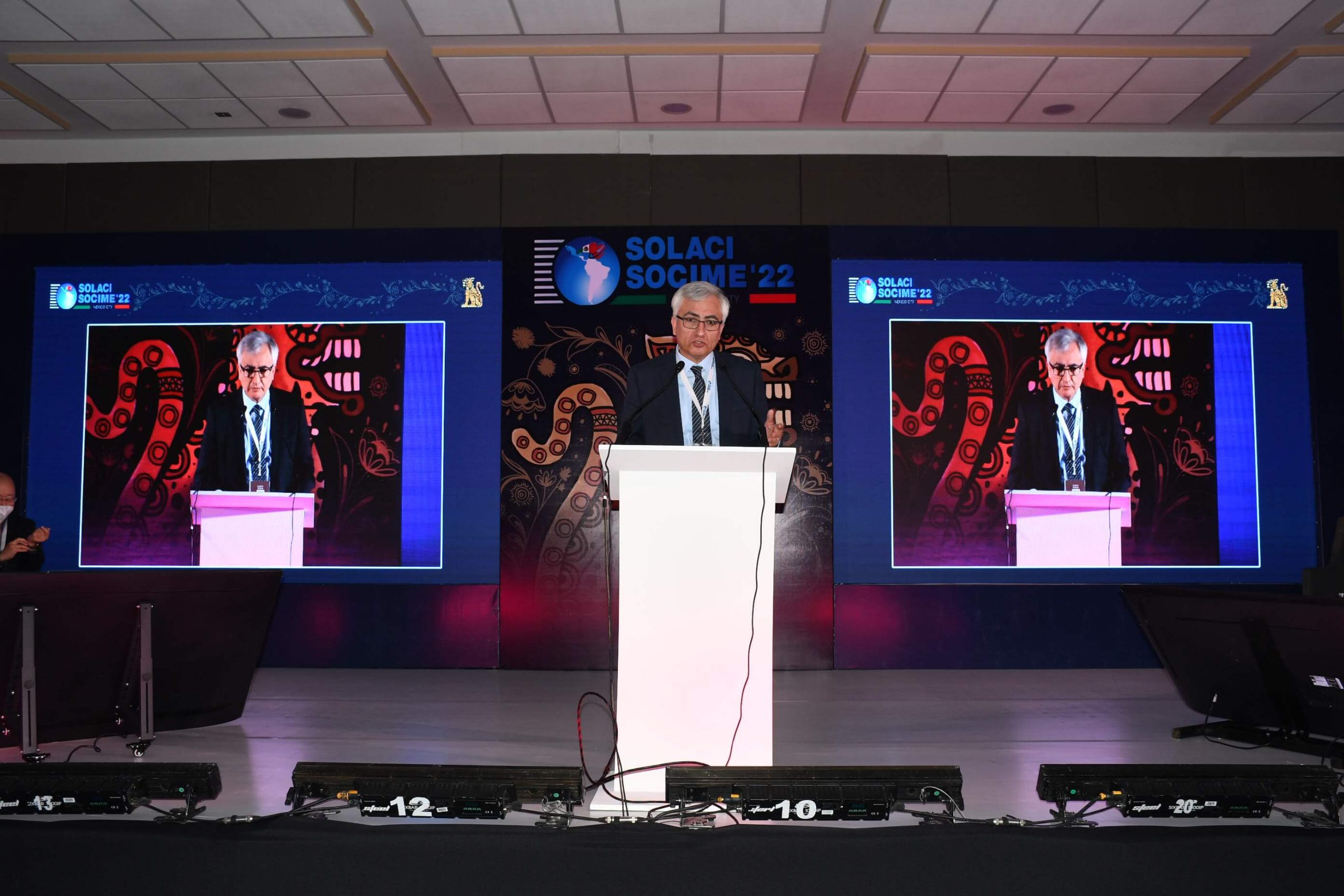Angioplasty by transradial access was discussed during a session on Day 2. We were pleased to participate in a conference by Dr. Shigeru Saito on distal radial access.
Currently, complications associated with transfemoral access are well-established, so transradial access is suggested as the initial strategy in several guidelines of various associations.
However, Dr. Saito shared the Leipzig Registry, which included 455 patients with an incidence of radial artery occlusion of 13% with 5-Fr introducer sheaths, and up to an incidence of 30% with the use of 6-Fr introducer sheaths. This complication usually does not cause symptoms, but it hinders the use of this access in the future. Additionally, Dr. Saito shared results from the RAP and BEAT trial, where the radial artery occlusion incidence rate was 2.61% (n = 1838).

Within this context, distal radial access emerges as an alternative with the following advantages, as mentioned by Dr. Saito: it maintains the flow in the radial artery in the forearm area during hemostasis; it reduces the risk of thrombosis; hemostasis is safe and fast, and it provides a comfortable operator-friendly arm position for the patient.
In terms of its challenges, Saito highlighted the following: radial artery diameter is small; anatomy is less predictable, and puncturing is more difficult.
During the conference, the aforementioned expert shared the experience of his site using this access. In 2410 patients, cannulation success rate was 91% and the incidence of radial artery occlusion was 9.7%.
Dr. Saito also mentioned results from the DISCO Study that compared conventional radial access vs. distal radial access. While there were no statistically significant differences, the conventional arm showed a greater trend towards radial artery occlusion. As conclusion, he pointed out the low incidence of radial artery occlusion with distal access: while conventional access continues to be the gold standard, distal access is a valid alternative due to its short and safe hemostasis process.
Dr. Saito continued his presentation discussing the DISCO COMPLEX Study, a randomized multicenter prospective study that included 706 patients with complex coronary lesions requiring angioplasty and compared distal radial access vs. conventional radial access. The primary endpoint was doppler-evaluated radial artery occlusion.

Later, Dr. Guering shared the characteristics of that technique and commented on the Slender devices that help reduce vascular damage and the number of complications. He referred to the use of devices ≤5 Fr. It is possible to use this technique and devices in coronary angioplasty (known as virtual angioplasty), even when using intravascular ultrasound. He also clarified that one of the characteristics of this technique is that it does not use an introducer sheath.
More experience is needed, and so are randomized studies with longer follow-up to evaluate the results of the distal radial access at present. So far, the results obtained with this access are promising.

Dr. Andrés Rodríguez.
Member of the Editorial Board of SOLACI.org.
Subscribe to our weekly newsletter
Get the latest scientific articles on interventional cardiology





